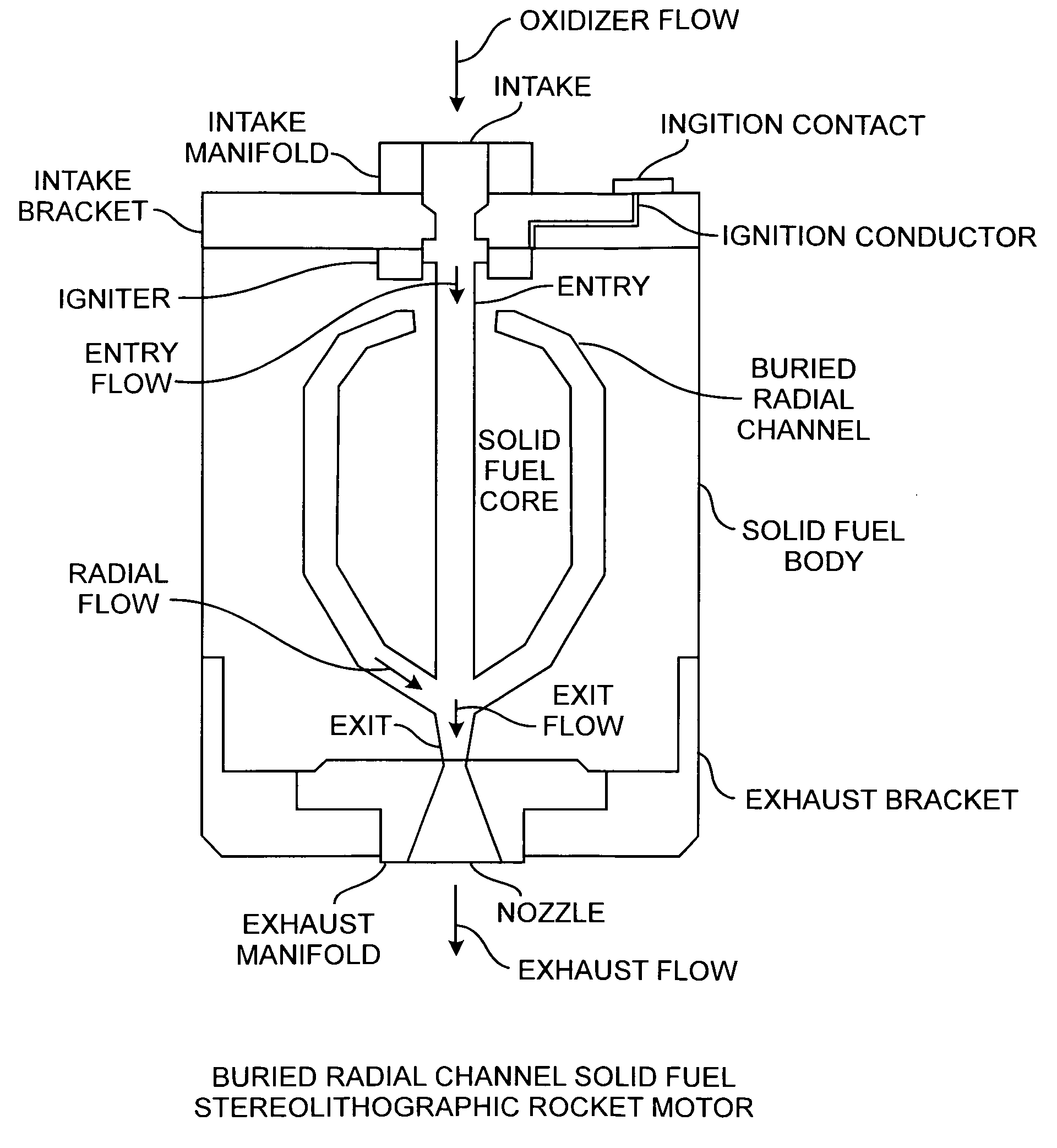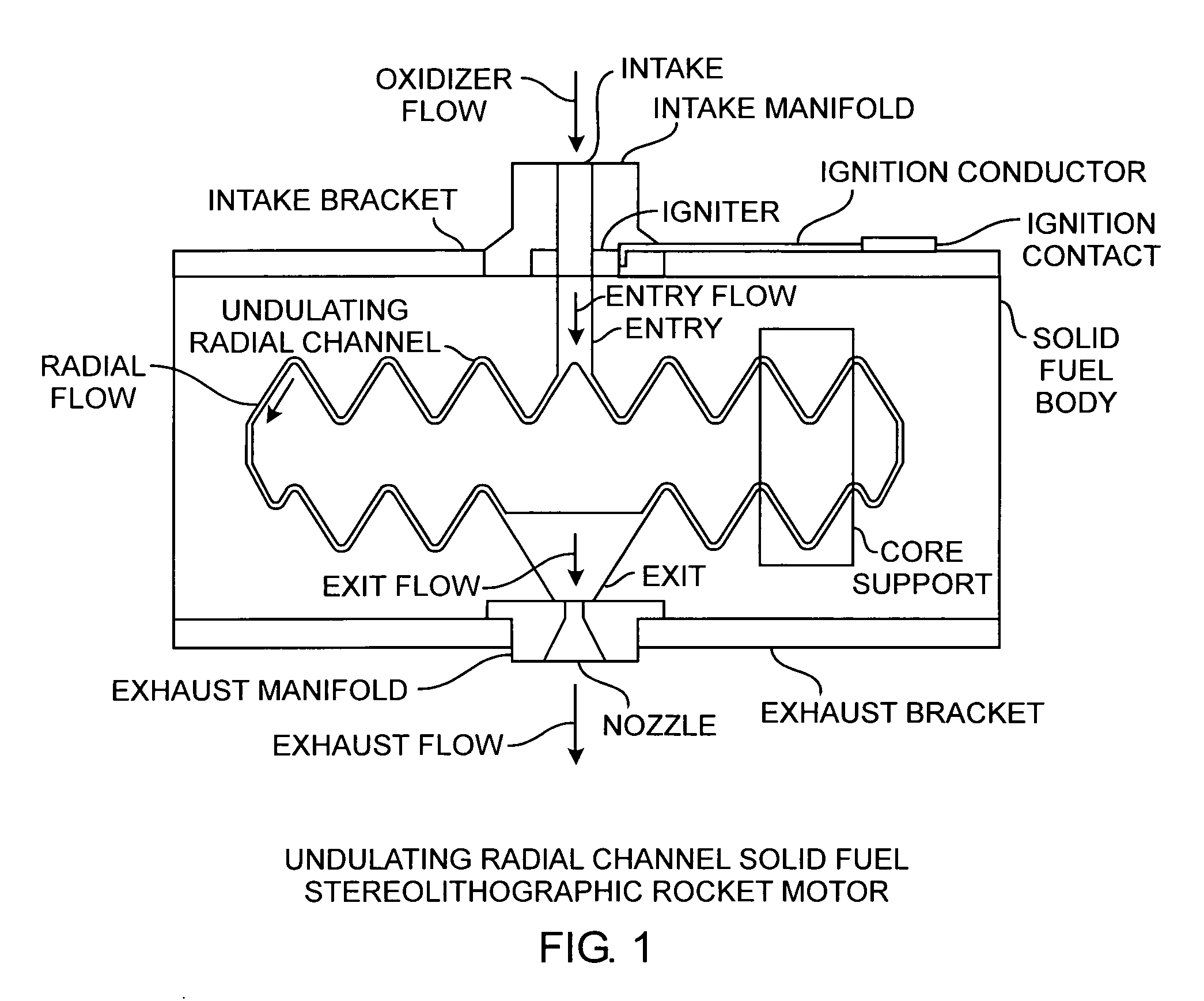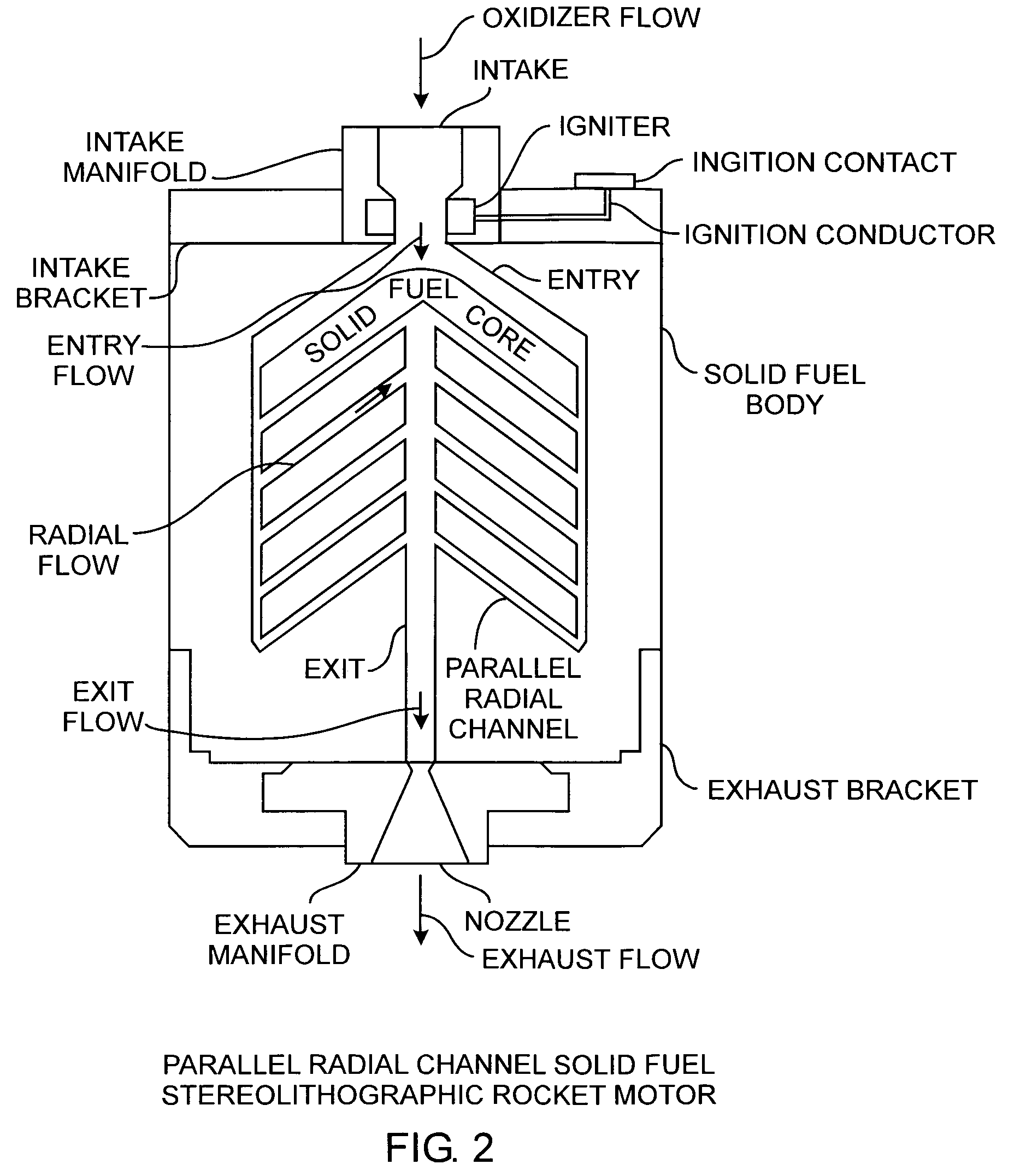Radial flow rapid prototyping rocket motors
a rocket motor and rapid prototyping technology, applied in the direction of machines/engines, working fluids of engines, engine manufacture, etc., can solve the problems of hybrid motors not generally delivering the performance of liquid motors, disadvantageous physical longness along the rocket motor axis, etc., to achieve compact packaging, improve performance, and improve the effect of compact design
- Summary
- Abstract
- Description
- Claims
- Application Information
AI Technical Summary
Benefits of technology
Problems solved by technology
Method used
Image
Examples
Embodiment Construction
[0027]An embodiment of the invention is described with reference to the figures using reference designations as shown in the figures. Referring to FIG. 1, an undulating radial channel solid fuel rocket motor includes a fuel grain comprising a solid fuel body, a solid fuel core, and optional core support. Preferably, the fuel grain is completely made of a photopolymer comprising fuel disposed using stereolithography. The fuel grain includes an entry having an entry flow and an exit having an exit flow. The entry and exit flows are in axial alignment for axial reference. An intake manifold providing an inlet, includes an intake that is an aperture through which an oxidizer flows designated as an oxidizer flow. The intake may also include multiple apertures to introduce a larger volume of oxidizer without exacerbating the oxidizer to fuel ratio problems that might occur by flowing all of the oxidizer from a single inlet. An exhaust manifold includes a nozzle through which exhaust flows...
PUM
 Login to View More
Login to View More Abstract
Description
Claims
Application Information
 Login to View More
Login to View More - R&D
- Intellectual Property
- Life Sciences
- Materials
- Tech Scout
- Unparalleled Data Quality
- Higher Quality Content
- 60% Fewer Hallucinations
Browse by: Latest US Patents, China's latest patents, Technical Efficacy Thesaurus, Application Domain, Technology Topic, Popular Technical Reports.
© 2025 PatSnap. All rights reserved.Legal|Privacy policy|Modern Slavery Act Transparency Statement|Sitemap|About US| Contact US: help@patsnap.com



